Painting the Future: XQ Super School Finalist Envisions Partnerships with Professionals

Arts education programs throughout the country have waned in the wake of budget cuts and a call for greater focus on STEM subjects. Despite it being in violation of some state laws, many students still don’t have access to arts education. Most of the schools that have a lack of arts programming are in high-poverty areas, serving students who arguably need it the most.
In response to this, Cynthia Campoy Brophy founded artworxLA (formerly The HeArt Project) in 1992 to address the significant lack of arts education programs for students in Los Angeles.
Since its inception, artworxLA has worked with over 12,000 students at 50 alternative education sites in eight school districts in the greater Los Angeles region. The program works with the Los Angeles County Office of Education to exclusively serve students ages 14-18 who are at high risk of dropping out of high school. The program supports and empowers these students to achieve new, positive identities – high school graduate, college student, and community leader – through art.
Now, as a top 50 finalist in the XQ Super School Project, artworxLA is validated in their work and plans on using their success to make big changes to the education landscape. We recently sat down with Cynthia to learn more about her organization, her involvement with the XQ Super School Project, and her thoughts on the future of education.

NAC’s Michael Pinto and Lauren Scranton interviewed Cynthia Campoy Brophy, founder and executive director of artworxLA, on her team’s submission to the XQ Super School Project, a contest to redesign the high school experience. The winning teams will have access to $50 million to turn their ideas into a reality.
NAC: Congratulations on being selected as a finalist for the XQ Super School Project funded by Lauren Powell Jobs [Steve Jobs’ widow]. What drew you to this project?
Campoy Brophy: About five years ago we started the Hollywood Media Arts Academy where the students are taking art classes 10 hours a week while complementing their other academic subjects. We’ve had terrific results. This can be a very fluid population and our retention rate has improved from 32 percent to 81 percent. There was a time we had a waiting list, where we were enrolled at capacity, and we tripled the number of graduates. We were inspired by the successful role the arts can play in strengthening the creative culture of a school, of really improving student engagement across the board, and by the potential to create new pathways to college and career. In Los Angeles one in seven jobs is in a creative industry. So before XQ we started a plan to open five arts academies. Each one will be aligned with one of the creative industries in L.A. Each will have this creative career focus but be a full continuation high school. We were already on the pathway to execute this vision and the XQ project came along. So apparently over 700 applications were submitted and we’re in the top 50. No matter what happens, it feels like our idea has been validated and we’re on to something.
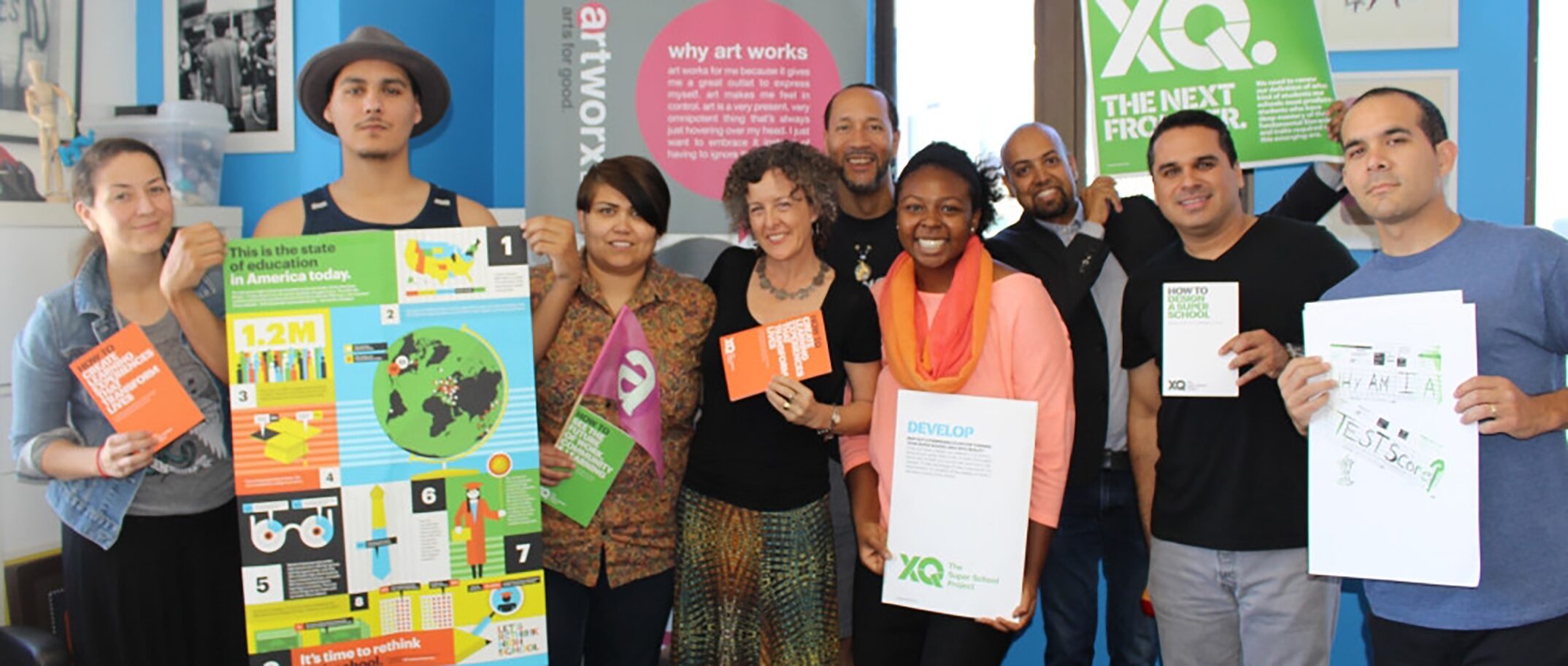
artworxLA is one of 50 XQ Super School Project finalists (published by Paul Ulukpo July 26, 2016).
What does it mean to have gotten this far in the XQ competition? How has this process helped your longer-term visioning?
It’s helping us really think about a model of partnership. We really believe that changing the conversation about high school can’t be done alone. It takes partnership, and yet partnerships are challenging. So how can we really use this to inform that conversation—what is a sustainable partnership that feels equal?
And just the fact that the arts have struggled for many years to be viewed as integral and not extracurricular, and when we built the Hollywood Media Arts Academy we really saw the power of the arts to engage and inspire. So to now be a part of this national conversation with the arts front and center is really exciting.
Seems like part of the goal of XQ is to put out models that could transform education—now, having the validation, what should mainstream education be learning when looking at a program like yours? How should education be evolving in response to what’s being produced through the competition?
We’re focused on the hardest to reach population and the range of opportunities that exist for our students has gotten so narrow. We need to make sure that the education they receive is more holistic. We also live in this really creative community (Los Angeles), so how do you make sure creativity is infused in the structure of education so that teachers are creatively inspired as well as students? How do we bring in creative industry partners to inform our curriculum to keep content relevant and linked to real world? How can these schools be more community centered? Creativity, connection, relevance—all of these are the elements that are essential to moving education forward.
Another thing is the role of the teaching artist in the classroom. To give an example, if we’re teaching music, we’ve seen it’s really effective to have the students learn from a professional working artist rather than trying to train an educator to keep up with the tools that are in the workplace today. Our partnership structure ensures that there’s space for professionals to come in to the classroom and share their knowledge.
It’s about having a complementary teaching style between the educator and the professional that provides a different level of inspiration for the kids. How do you keep up with your industry and keep curriculum in the classroom relevant? The professional tools are updated so quickly, meaning that the professional artists are going to be a great asset for the classroom teacher.
In architecture schools today, there’s a similar challenge within programs where a handful of faculty are career academics, and another handful of faculty are primarily practitioners. It’s just inspiring when you talk about the value of the professional and the educator.
There’s a place for integration. I think both are important.
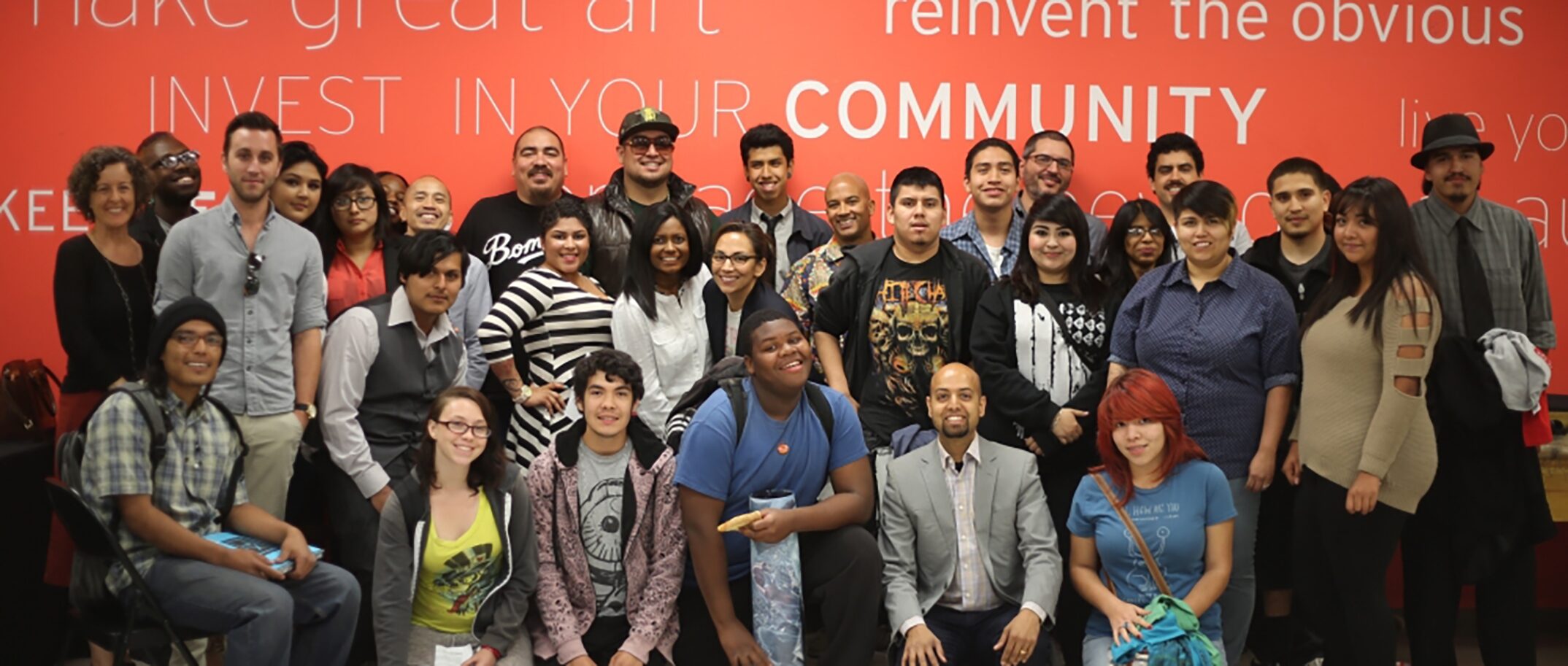
So what does your school of the future look like?
We recently started a conversation about creating a fashion academy. We brought an architect into a fashion company with whom we have a partnership. The architects looked at how the company is laid out, how the departments work and talk with one another, and how that could influence the layout of a high school fashion academy. For instance, there could be places for traditional classrooms (math and science) but then there would be a multi-purpose lab that reflects the departments of the fashion company, and the front space would serve as a showroom. The real world industry informs the classroom layout, and provides an inspiring creative space where the students are motivated to learn and explore. This is not a model for a vocational fashion academy, but more that this creative model inspires the whole. It’s based in reality. It’s not just a factory to produce pattern makers—it’s using real world relevant experience to inform and inspire a whole child that is going to graduate with marketable skills to go into the fashion industry. They’ve also been trained to think creatively and given the tools to be successful wherever they go.
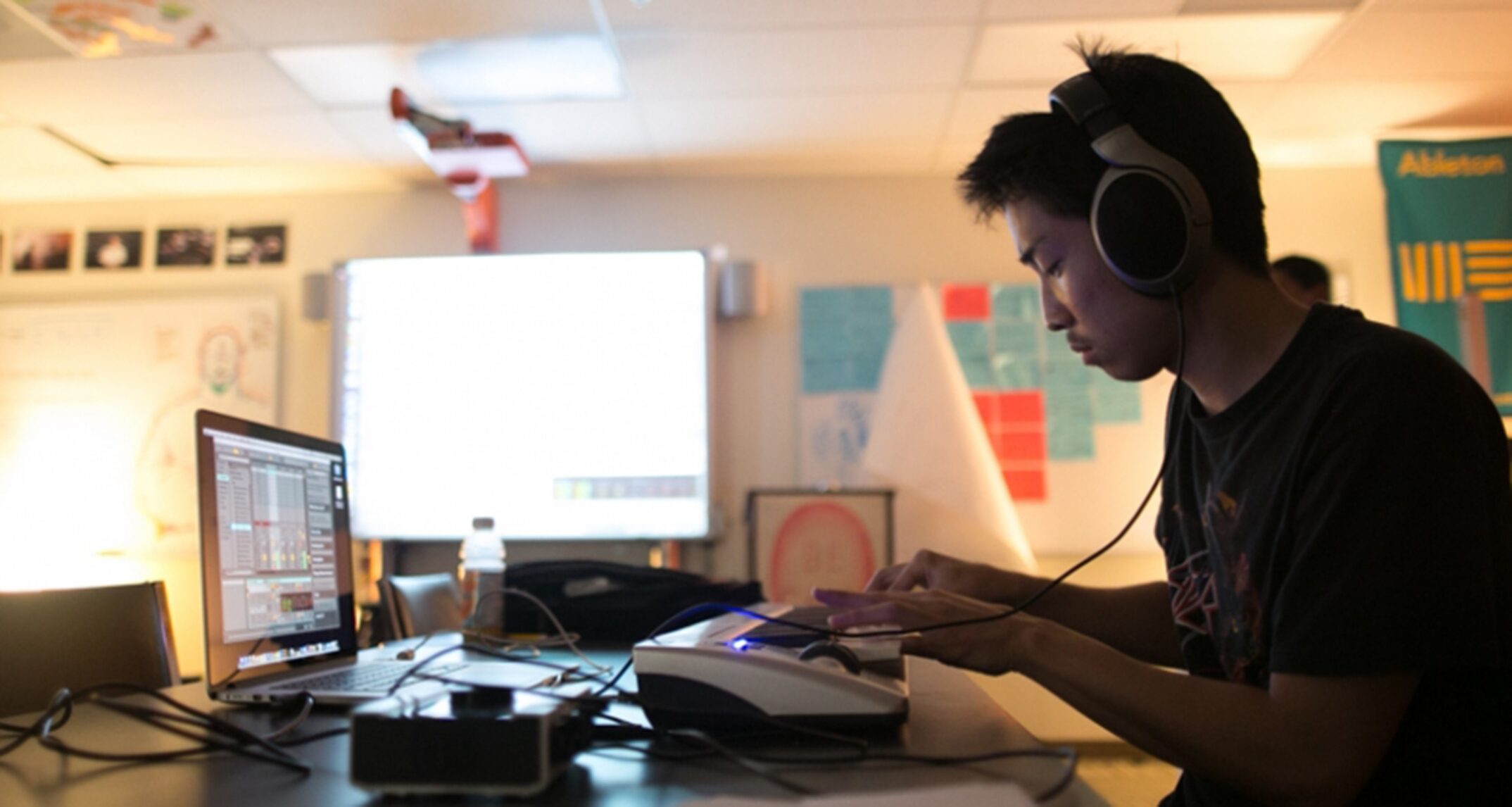
Let’s go back to the beginning. What gaps in education were you trying to fill when you started artworxLA?
I come from an arts background. Prior to artworxLA I was working at the Museum of Contemporary Art in Los Angeles. My work was valuing the role of art to link a community, encourage communication, and dialogue with people from different communities and backgrounds. At the time it was the height of gang violence in our city. There were teenagers killing teenagers. As I began to look around at what was happening in these communities, there was this dearth of arts education programming and the schools had no resources. [I thought to myself] Well no wonder kids are angry and lashing out, nothing is being offered. At the same time, I met Ken Breisch at the Southern California Institute of Architecture (SCI-Arc). So we decided to bring a few architecture grad students to Para Los Niños on Skid Row to lead architecture workshops.
How did that connection to Para Los Niños happen?
Para Los Niños was sending their teenagers to Inner-City Arts (ICA) to receive arts programming. ICA wanted to focus on younger students at the time, so we then began to bring an arts program to the teenagers at Para Los Niños.
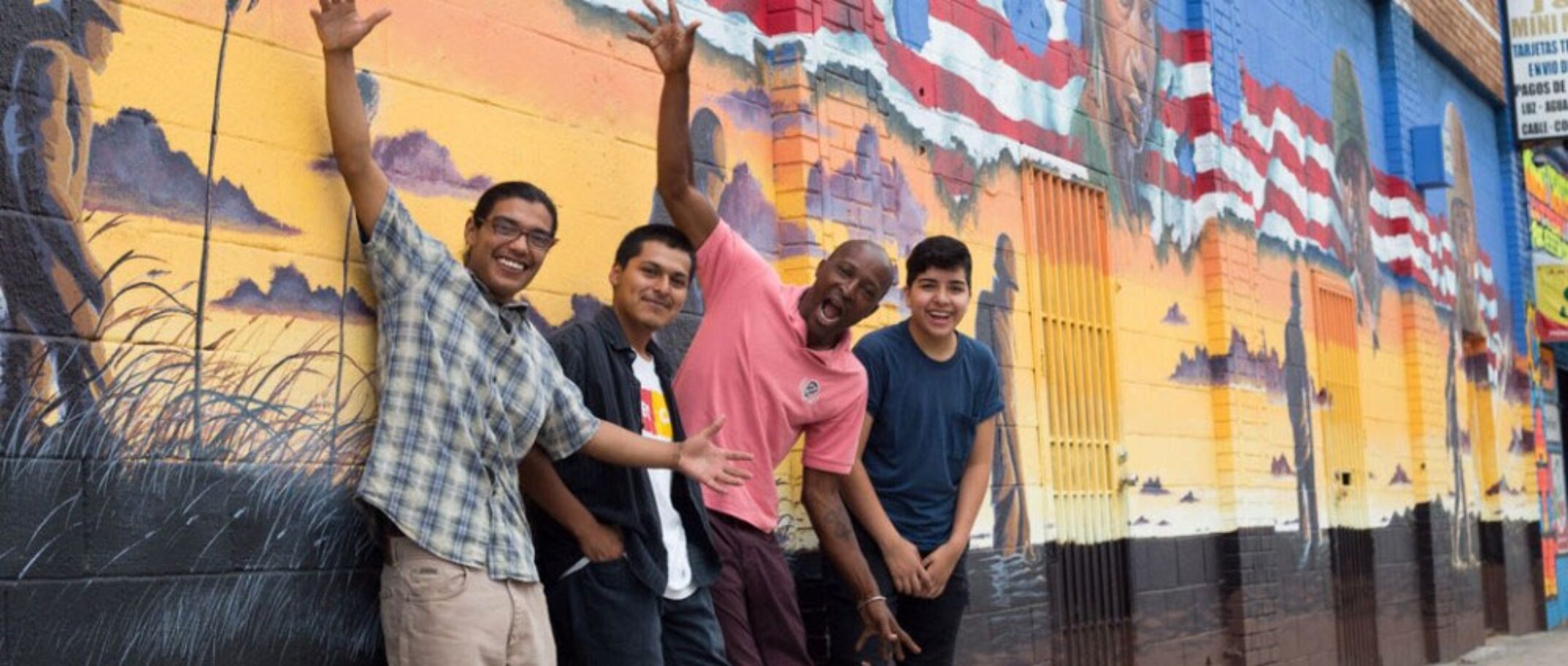
An architecture workshop was the first program you offered?
Yup! We took a walking tour around downtown L.A., led by grad students from SCI-Arc: Ulises Diaz, Monique Birault, and others. They taught the students about the history of their neighboring built environment, as their community center was located just east of downtown’s center. The students then built models of their ideal community center. The models were exhibited at SCI-Arc, and for most (if not all) of the students, this was their first visit to an institute of higher education.
Your program exclusively serves teens at alternative high schools. Have you always just offered programs at continuation schools, or did it start more broadly?
While we were doing a workshop at a teen community center, someone suggested we look at a continuation high school. We were introduced to Central High School at Angelus Plaza, a dropout prevention and credit recovery school. We’ve been there now every Wednesday for 24 years. I got introduced to that site, and from that site learned about this network of continuation high schools throughout LAUSD [Los Angeles Unified School District] and now we’re in five school districts and working specifically with their continuation high school population.
How do you set students up for success in this program?
The more time we have with the students, the deeper the impact. That said, even if we see a student only once (which isn’t how the program is structured) we try to make each point of contact as powerful as it can be.
We’ve created a structure that stays the same each year, but the content changes, keeping it fresh, exciting and relevant. We come into your classroom once a week for 10 weeks. At the conclusion of each ten week session, a group of peers comes together to share the work that they created collegially. The students have expanded their connection to community by going to that institution and having your work presented there. There are three 10-week sessions per year. The structure becomes familiar but we invigorate them every year with new content.
In this election year, two of our partners are the Los Angeles Public Library and TaskForce PR, which is a communications agency run by Yosi Sergant who worked with artist Shepard Fairey on the “HOPE” poster. The theme is going to be civic engagement; how can our students have a voice in that very important conversation? How can an artist play a part in encouraging that conversation and giving it a shape? Whether it’s spoken word, painting, silk screening or music, it’s a manifestation of the student voice related to this timely topic and then the students’ work will be presented at the library.
In our work at NAC, we talk a lot about Howard Gardner’s theory of multiple intelligences. In your program are you reaching kids who have a predisposition toward the arts or do you find that your program reaches all kinds of learners?
Education should offer each student multiple ways of thinking so that they’re exercising multiple parts of their brain. Our partner continuation high school classrooms often have one or two teachers and their pedagogical structure is sometimes isolated. By bringing students the opportunity to work with artists encourages them to think in a way that they maybe haven’t been encouraged to think before.
A lot of our kids have never had an art class. I think a lot of them are different thinkers and that’s why they didn’t fit into the traditional educational system—that’s why the system failed them. So exposing them to artists and encouraging them to explore in a different way will help inform whatever pathway they take in their future.
Any final words?
Our goal is to create a replicable model—an education model driven by creativity and the arts. We want to create arts academies that focus on music, media arts, fashion, gaming/coding and design. We have seen the power of the arts to re-engage our student population, not only in the arts, but in all of their classes. By re-engaging them in their education, we are helping them reclaim their future.
From all of us at NAC, good luck in the XQ Super School competition!
Cynthia Campoy Brophy
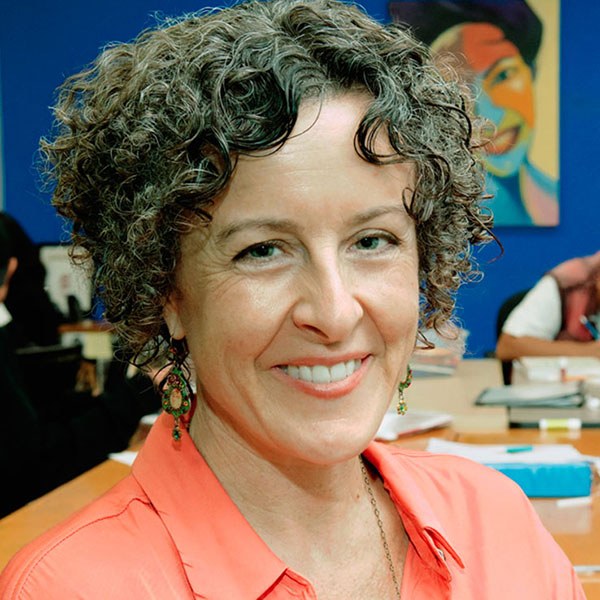
Cynthia founded The HeArt Project (now artworxLA) in 1992 by bringing arts workshops to one teen community center. Prior to this, she was publicist for The Museum of Contemporary Art from 1986 - 1990. Cynthia completed her undergraduate studies at UCLA and is a graduate of the Coro Southern California Arts Leadership Fellows program, the recipient of the 1997 Vision Award recognizing social entrepreneurial leaders, and was a fellow with the Eureka Foundation. She served as a member of the Los Angeles County Arts Education Program Advisory Group that developed Arts for All: Los Angeles County Regional Blueprint for Arts Education. In 2003, she participated in the Los Angeles County Arts Commission’s Arts Leadership Initiative Executive Learning Group and was one of 46 individuals from around the country selected to attend the Stanford Graduate School of Business Executive Program for Nonprofit Leaders in the Arts. In 2005, she participated on the Los Angeles Unified School District’s Options Task Force, charged with evaluating the effectiveness of the nation’s largest dropout and recovery program. From 2004 - 2006, she was appointed by the Speaker of the California State Assembly to serve on the Board of the California Cultural and Historical Endowment, created to administer Proposition 40 funds dedicated to preserving historic and cultural resources. She has also served as Chair of the Board of Directors for Arts for LA, an arts advocacy non-profit. In 2013, she was awarded a Durfee Sabbatical from the Durfee Foundation in recognition of her leadership in arts education.
